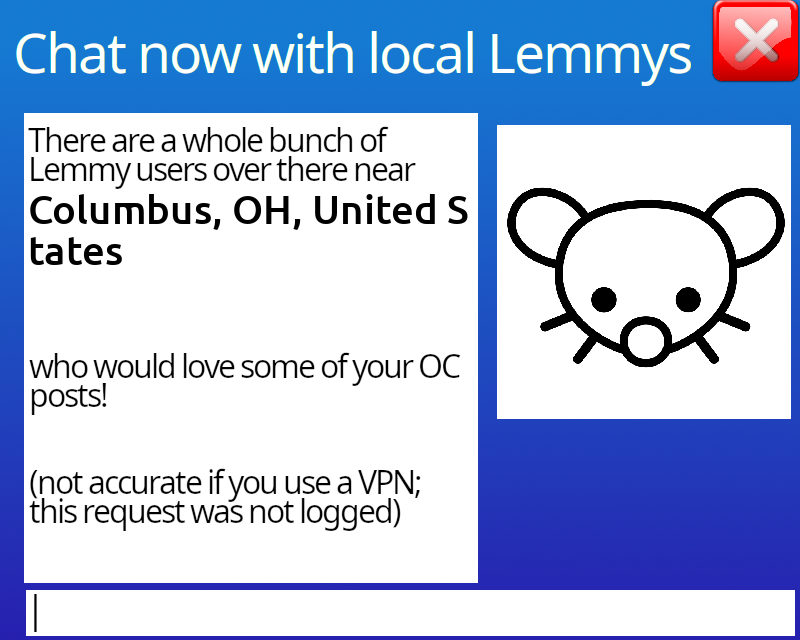

PayPal did the same. Registration took 40 characters, login only half of that. Editing the login form didn’t work unfortunately.
Giver of skulls



PayPal did the same. Registration took 40 characters, login only half of that. Editing the login form didn’t work unfortunately.


Sounds like they’re using bcrypt. Feeding more than 24 utf8 characters into bcrypt won’t do anything useful. You can permit longer passwords (many sites do) but they’d be providing a false sense of security.
Bcrypt is still secure enough and 24 characters are fine as long as they’re randomly generated by your password manager.


I bought those IKEA plugs. They work over Zigbee and should work fine with Zigbee2Mqtt. They’re white, though. Setup couldn’t be easier (enable discovery in whatever Zigbee system you use, factory reset the plug, wait five seconds).
Watch out with fans, though. The IKEA plugs, for instance, do about 3600W of normal load (@230V, for things like lamps and computers), but only 300W of motor load (fans, vacuum cleaners, etc., unless they have modern inverter circuitry). Even if you consider alternatives, make sure they can actually drive your fan. The startup current for an electric motor like that can be massive!


I always thought these markings were made by machines, until I saw some people draw them by hand. Turns out, you can make near perfect road markings with a movable can of paint. If you use GPS to trace out your track, you can just fill them by hand.
As for construction, here’s a timelapse of making one using stone tiles: https://youtu.be/gXiOt-9WCag
Here’s one made of asphalt: https://youtu.be/DORBEGYVgYE Note the pre-poured blocks of concrete in the center, which likely help the round shape.
In this video you can see the imperfect temporary road markings for a short moment: https://youtu.be/SV2vSL_hiA0
This video showcases a different style of roundabout that makes two-lane roundabouts a bit easier. Note the two round, concentric lanes separated by concrete barriers: https://youtu.be/iRclLOgN-xw
This video showcases the manual driving work done to make the round roads: https://youtu.be/KCQv24BkI6Y This is a four lane roundabout. The video also shows how the line markings are applied (by a spout, in a car).
This video shows a prefab concrete roundabout installed over a weekend. All they needed to do was prepare the soil, lay down the blocks and paint the lines: https://youtu.be/J-BZWfbygkc
This video shows how the center concrete slabs can be laid on location using a specialised machine: https://youtu.be/J2g0JZzqbAs
I’m not sure if this tech is applied, but farmers use millimeter precision GPS to efficiently farm their soil. The GPS receiver itself costs a couple of grand, but making a car in a closed-off road drive in a perfect circle is hardly a technical challenge these days. That said, these people can probably do it by hand and you wouldn’t notice the difference.


The problem with banning these is that most of the time, the victims aren’t being forced to go to these places. Adults are talked into it using whatever religious shaming bigots can come up with.
When it comes to kids, you run into the issue that kids don’t have a say in their own lives (they do have rights, but they can’t easily exercise them). You can ban discrimination based on sex or gender, but you can’t easily interfere with a week-long church program for troubled youth. The state doesn’t get to dictate your religion.
A significant portion of just about any country on earth is grossed out by the thought of homosexuality. For a large part of voters, being gay was still a crime back when they were young. Things like gay marriage are still hot topics in the EU today. On the scale of centuries of backwards abuse and scapegoating, gay rights have moved forward at lightning speed, and it’ll take a few generations for those advancements to solidify (or, in case of the US and UK, lose decades of progress to hopefully regain them in the future).
Also, leeches are still used in medicine today, as well as ants, worms, and maggots. Not to cure the flu (unless your flu symptoms are the result of extreme iron consumption, in which case bloodletting is still necessary and leeches may keep blood flowing while doing that).


The entire industry collapsed, but he worked on https://framevr.io/ which was exactly the type of software that people flocked to during COVID. After people were able to go home again, many of these companies tried to pivot to the metaverse in hopes of jot throwing out their product entirely, unsuccessfully it seems.
Conceptually, it’s not terrible. The product isn’t as much of scam as you might think it is based on the metaverse tag.


PHP is still massive. I wouldn’t highlight the language, but there’s nothing wrong with using modern PHP for web applications. Most of the world’s websites are probably still based on WordPress, although websites have gotten better at hiding it these days. It’s fast, easy to use, massively popular, and some of the PHP frameworks beat out “modern” languages in terms of features and productivity by a long shot. I know software developers like to joke about older tech like PHP and Java, but it’s what the world still very much runs on, and especially with PHP people seem to have drunk a bit too much of the Kool-Aid.
Based on bos current CV (https://shawnfromportland.com/Shawn_K_Resume_2025-8.pdf) I think he should be perfectly employable as-is. Experience with various frontend and backend systems in a wide variety of business segments.
I can’t see what his CV used to look like (went 404 after HN tore him to shreds it seems) but it seems he’s made four new iterations based on the URL alone. I’m guessing he tried to pivot into the “vibe coding” “AI developer” ecosystem as of late in hopes of catching a trend, because based on his experience I don’t think he needs to hide his actual competence behind AI like that.


Sounds like a QoS thing, unless your connection is really bad. Assuming your network has the available capacity to game and chat, there’s probably something fucky going on with packet ordering.
There are tons of different Gamer ™ software packages that could be the culprit, but anything preinstalled by Lenovo would be my first suspect. Also check for anything labeled “Killer” in Device Manager under network or Bluetooth. Killer WiFi (and I think they have an ethernet thing as well?) is sold as a feature on some gaming devices but in my experience its name only rings true in that it’ll kill your gameplay experience.
Routers can also do QoS fuckery. If you’re on a connection with low upload (DSL, cable) check if your router does network prioritisation/Quality of Service/QoS things. If you have more than enough upload capacity, you could still check and disable the setting to see if that’s the cause.
Note that while Discord uses barely any network traffic to do voice, it’s very sensitive to latency issues. If you’re capping out the connection to your router (quite easy to do over WiFi or in P2P video calls) you could be transmitting at dozens of megabits a second with more to spare, but your VoIP connection could suck terribly because of latency and jitter.
Also worth trying: rebooting, if you haven’t already. Clicking “shut down” and then turning your PC on does not reboot it in Windows! It’s stupid but manually clicking reboot in the start menu twice sometimes fixes weird issues like these.
Lastly, as Discord is peer to peer as far as I know, your bandwidth with some other locations may just not be very good. A gigabit of upload to speedtest.net doesn’t mean you can exchange traffic with your friends directly that fast. You can try to use one of those piracy VPNs to avoid your ISPs network edge and see if that improves things.


I can’t say I care too much about this feature, but looking into it I can’t seem to find any documentation about it at all. Where are you getting this confirmation that you can’t disable it?
I’d just stop using Steam Chat if it’s not working for you, there are dozens of game chat services specifically built for chatting in games. Then again, I’d probably stop playing with people that make me self–conscious of typing indicators as well.
Also lol @ anything Valve designs being “modern”. Steam Chat looks, feels, and behaves like MSN Messenger did twenty years ago. Don’t let the gradients fool you.


deleted by creator


deleted by creator


deleted by creator


deleted by creator


deleted by creator


[This comment has been deleted by an automated system]


[This comment has been deleted by an automated system]


deleted by creator


deleted by creator


deleted by creator
The specification of the algorithm specifies up to 56 bytes, including a null terminator. If you’re using UCS-2 (2+ bytes per character, like Windows, Java, Javascript, and more languages and platforms do), that’s 27 characters (can’t use the last half byte character pair). Add some margins for extended characters (emoji and such) and you’ll end up just above or below 24. With UTF-8 you can end up doing much better (exclusively Latin-1) or much worse (exclusively non-Latin character sets). Verifying that on the frontend is a massive pain (string length in JS is unreliable) and dynamically switching codecs is a recipe for bugs and security leaks.
The 72 byte limit is the result of the internal workings of most bcrypt algorithms, but if you ever switch implementations you need to make sure that implementation doesn’t change the internal workings if you rely on details like that. If the stars align you can use 71 characters (72 if you use Pascal strings), but that’s far from a given.